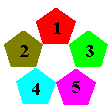temporary page - some pictures in linked pages may not show, blocked by photobucket.com
| Integral System of 
0. General Morphology 1. Brain - Mind 2. Communication 3. Organization 4. Processes 5. Methodology |
Go to: | Quick Info: | What is Morphosis? |
|
Menues: |
is Center Page Link colors: unvisited part visited part Please report |
We co-operate with: Kitchener Waterloo
Kitchener Waterloo |
|
|
|
|||
|
Date end of page |
|||
| . | |||
This website is faced with Dynamic Morphosis
Morphosis: Morphological Terminology for Change, replacing one system by the next system. We differentiate between Static Morphosis (butterfly) and Dynamic Morphosis (frog). In static morphosis, a system is disassembled into very tiny components, and reassembled into a completely different system that has no obvious similarity with the previous system. In a dynamic morphosis, an existing system changes by enhancing or adding properties (parameters) and reducing existing properties.
This website is undergoing a dynamic morphosis in as much as it is kept operational while parts of the website are being changed. So some pages may look different the next day while other pages - or the menu - remain the same.
A typical temporary "problem" is our recommendation of which page you should "bookmark" to come back to CanMor's website. From a consistency point, it would be cont01.htm. During morphosis, cont12.htm might be better, because your access to the main menu will be quicker. Of course, you always have the option of using a search engine to search for canmor, or systematic innovation - if you forgot or lost your bookmark.
A different morphological approach would be to build a completely new structure and its contents offline, then loading it up to the server, replacing all previous web pages. If the contents of the website remains the same, then this might be called static morphosis. During uploading to the server, none of the structures would be available to the user - a short time, nevertheless a fact.
Loading up the new website to a different server - or a different location on the same server - would not be static morphosis, because the previous version might still be kept around for some time. It would be possible to switch between the two versions - at least in theory, or run both versions simultaneously.
Email: get email address